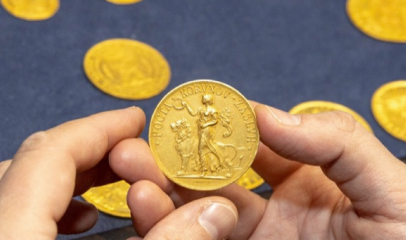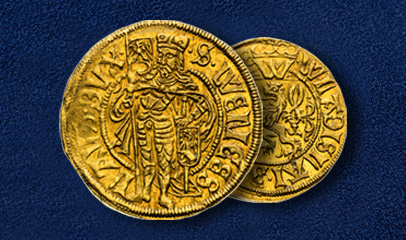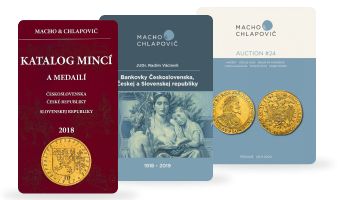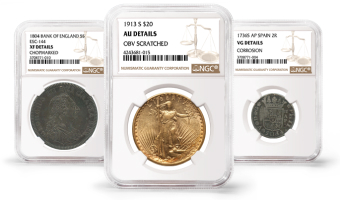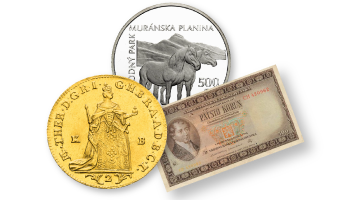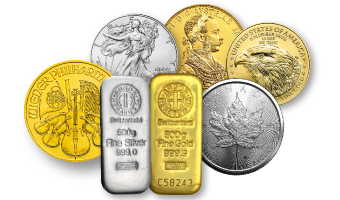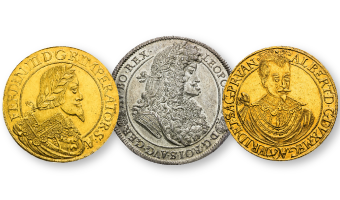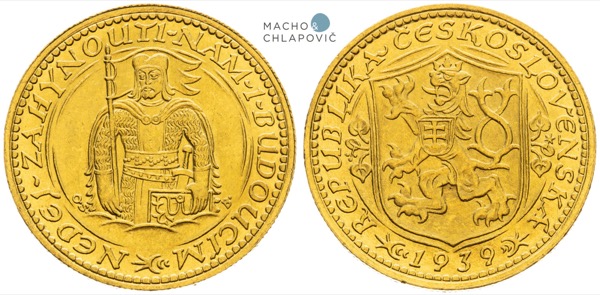
A Historic Tradition and Rašín’s Vision
The tradition of minting ducats in Kremnica dates back centuries. From 1330 to 1881, the local mint produced ducat coins and their multiples for various kings and Habsburg rulers. Alois Rašín, Minister of Finance in the First Czechoslovak Republic, sought to continue this tradition by introducing a gold currency that would help stabilize the newly formed Czechoslovak state. The Czechoslovak ducat—a gold trade coin— was meant to be the first step in realizing this vision. Unfortunately, Rašín did not live to see the ducat’s issuance.

Alois Rašín
A National Collection Effort
Shortly after the founding of Czechoslovakia, the country’s leaders launched a public collection campaign to support the new currency and build the state’s gold reserves. Citizens donated gold coins, jewelry, and even valuable family heirlooms. In total, approximately 65 kilograms of pure gold were collected, while an additional 3.2 tons were secured through government loans. This gold was later melted down and used to mint Czechoslovak ducats.
From Trade Coin to National Reserve
The Czechoslovak gold ducats, now known as St. Wenceslas ducats, were initially intended as trade coins. Some were sold to the public, while the rest were stored in the national bank’s vaults alongside gold bars that formed part of the country’s gold reserves.
Wartime Drama: The Fate of the Gold
The fate of Czechoslovakia’s gold took a dramatic turn. Shortly before the Nazi occupation in 1939, part of the reserves was successfully transferred to London, where it served as collateral for the Czechoslovak exile government. The remaining gold fell into the hands of Nazi Germany. In 1945, American forces discovered the seized gold in Bavaria and identified it partly thanks to the depiction of St. Wenceslas on the ducats.
A Complicated Repatriation
Bringing the gold back to Czechoslovakia was a long and complicated process. The United States and Great Britainset conditions for its return, including resolving claims by individuals whose property had been confiscated by the Communist regime. After years of negotiations, 18.4 tons of gold were finally repatriated in 1982, including several dozen—possibly even hundreds—of First Republic ducats.

Ducat 1939, RRR!
Historic CNB Auctions and the 1939 Ducats
At the turn of the millennium, the Czech National Bank made the historic decision to sell part of its reserves, including repatriated ducats, through written auctions. Across three auction rounds, a total of 465 coins were sold, 147 of which had official certification from the Czech National Bank (CNB). The second auction round included ten ducat coins dated 1939, one of which is featured in our auction under lot number 1260.
How Many 1939 Ducats Exist?
There are differing accounts of how many 1939-dated ducats were minted. According to records from the Kremnica Mint, 20 coins were struck for Czechoslovakia and 160 for the Slovak State. However, it is likely that the mint’s records contained an error, and that the 160 coins minted for the Slovak State were actually struck using a 1938 die. This would mean that no more than 20 authentic 1939-dated ducats exist today.
An Exceptional Coin in Our Auction
The ducat offered in this auction is exceptional not only for its rarity but also because it originates from the Czechoslovak gold reserves and comes with a CNB certificate. Coins with CNB certification are highly sought after by collectors and typically command significantly higher prices than uncertified ducats.
Specifically, this is a 1939 ducat struck in Kremnitz, listed as lot no. 1260 in Auction #36. The coin is considered extremely rare (RRR!). Starting price: €200,000.

Ducat 1939, RRR!


